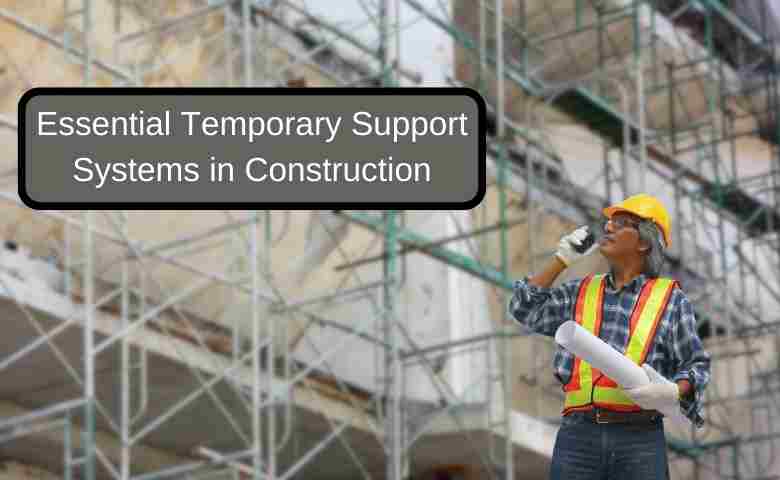Last Updated on February 27, 2025 by Admin
In the world of construction, safety and stability are paramount. Various temporary support systems are used throughout construction to achieve this, ensuring that structures, equipment, and workers remain safe and secure. One such critical support system is cribbing. In this post, we’ll delve into cribbing and its importance in construction. We will explore similar terms often used in the industry, such as shoring, bracing, scaffolding, falsework, underpinning, and formwork.
Table of Contents
What is Cribbing in Construction?

Cribbing refers to constructing a temporary support structure, usually composed of interlocking wooden or metal blocks, to stabilize and support heavy objects, equipment, or structures during construction activities. The primary purpose of cribbing is to distribute weight evenly and prevent movement or collapse, ensuring the safety of the construction site.
Cribbing is commonly used when lifting or moving heavy loads is necessary, such as during the installation of large machinery, excavation work, or structural repairs. The cribbing blocks are arranged in a pattern that forms a stable platform capable of withstanding significant pressure. This technique is essential for tasks that require temporary but reliable support, especially when traditional foundations or supports are not yet in place.
Key Applications of Cribbing
- Heavy Equipment Lifting: Cribbing creates a stable base when lifting or jacking heavy machinery or vehicles, preventing them from tipping over.
- Excavation Support: During excavation, cribbing can support the sides of a trench or pit, ensuring that the surrounding soil does not collapse into the excavation site.
- Structural Repairs: When repairing or modifying existing structures, cribbing provides temporary support, allowing workers to safely make changes without compromising the integrity of the building.
Similar Terms in the Construction Industry
While cribbing is an essential technique in construction, it is part of a broader set of temporary support methods crucial for various construction activities. Let’s explore some similar terms and their applications:
Shoring
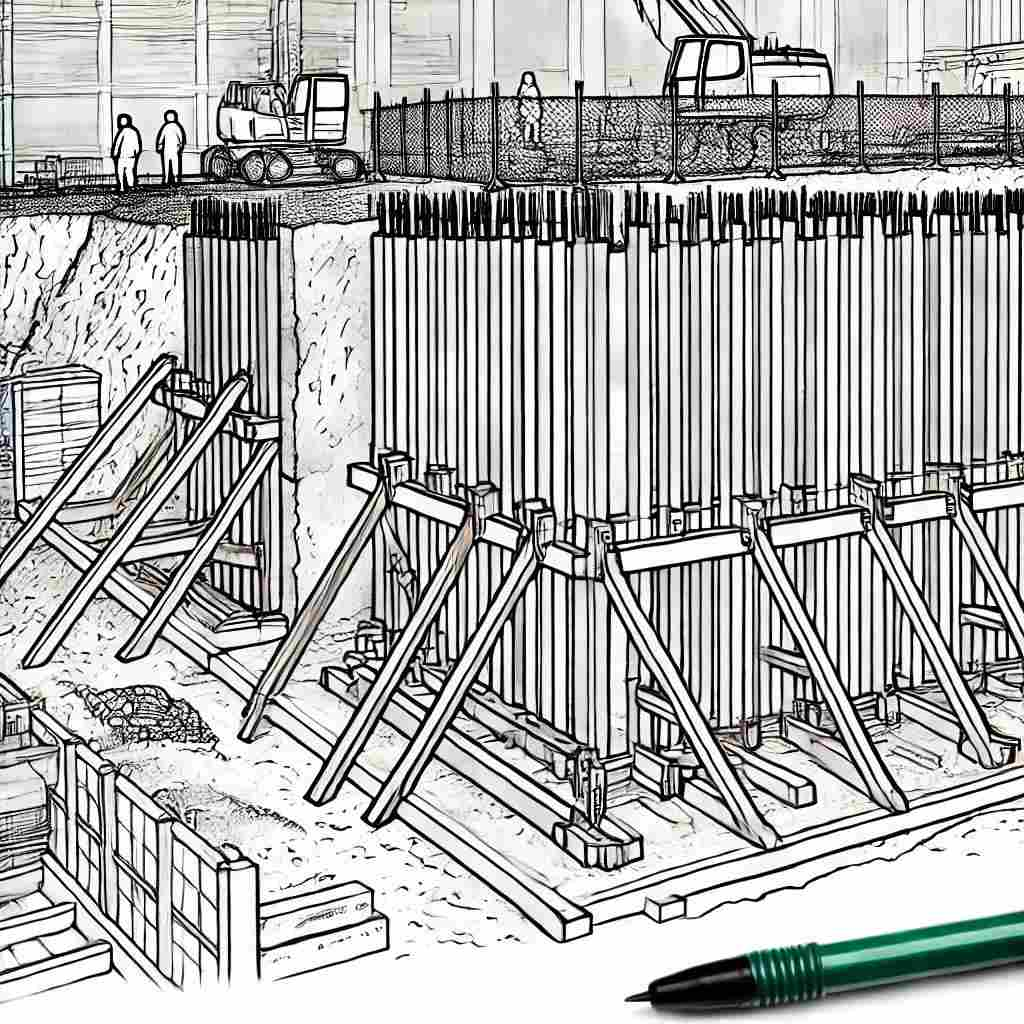
Shoring involves using temporary support systems to prevent the collapse of a building, trench, or structure during construction or excavation. It is particularly important when dealing with unstable soil conditions or when structures are at risk of movement or collapse. Shoring systems typically include props, beams, and other devices that reinforce and stabilize the structure.
Common Uses: Trench shoring to prevent soil collapse, building stabilization during renovations, and reinforcing weakened structures.
Bracing
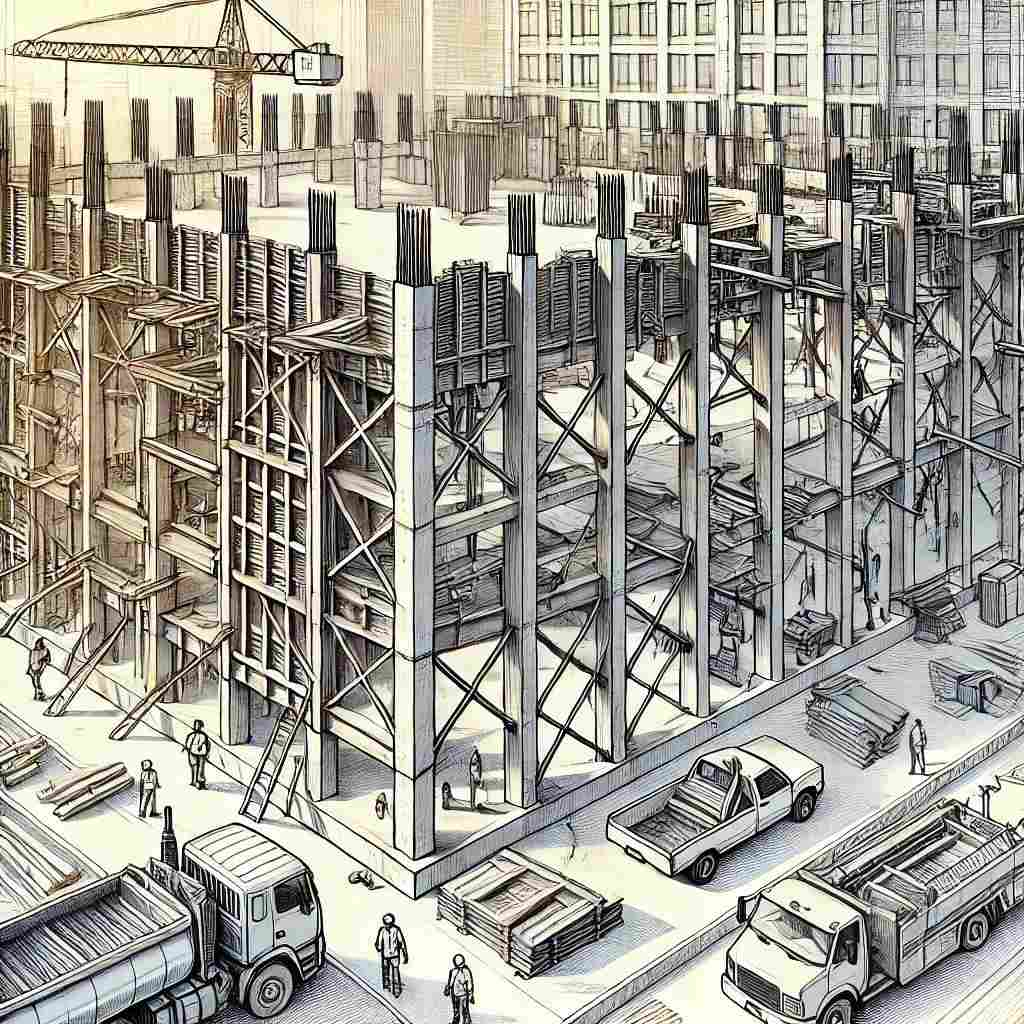
Bracing refers to installing temporary supports that strengthen or stabilize a structure or framework. Bracing is often used to resist lateral forces, such as wind or seismic activity, and to prevent movement during construction.
Common Uses: Stabilizing walls, columns, or frameworks during construction, preventing sway in tall structures, and reinforcing scaffolding.
Scaffolding
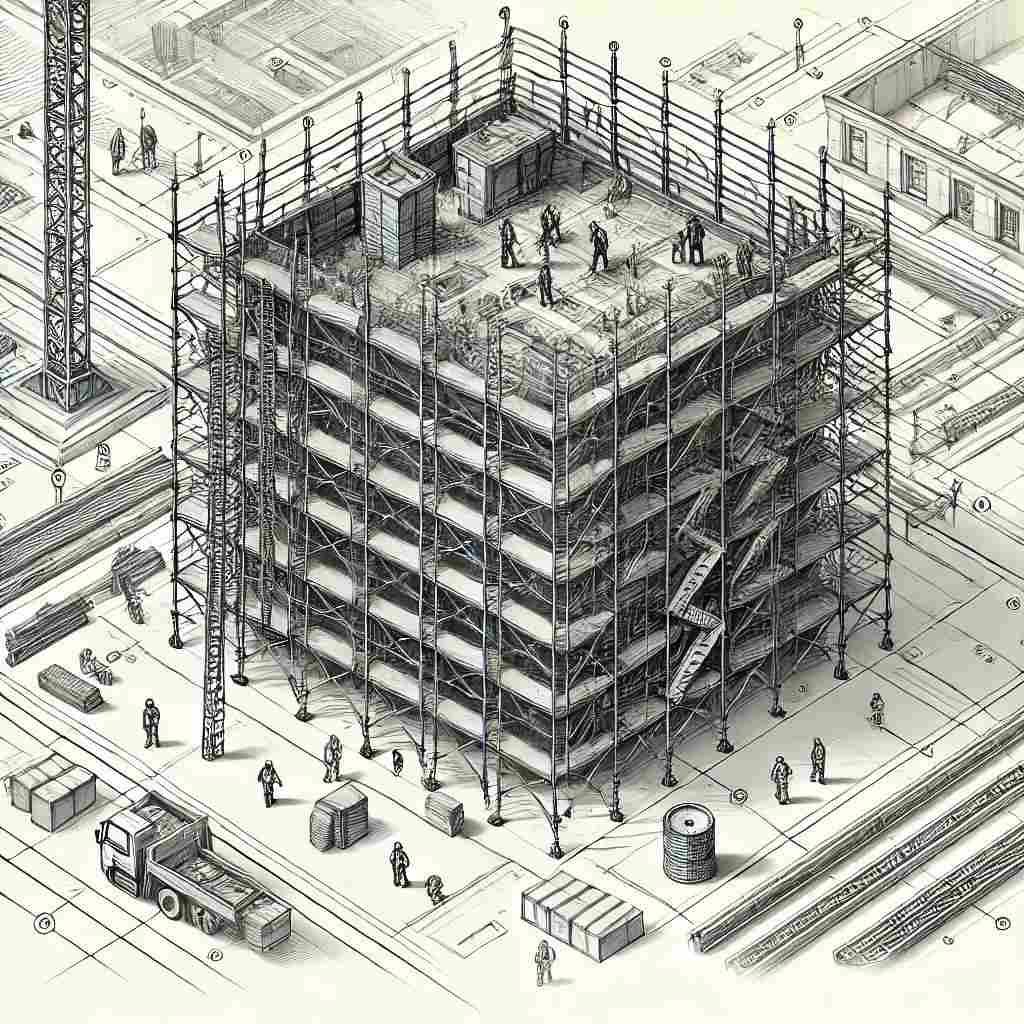
Scaffolding is a temporary structure erected to provide a working platform and access to areas that are difficult to reach during construction, maintenance, or repair work. Scaffolding is typically made of metal or wood and is designed to support workers and materials.
Common Uses: Construction of high-rise buildings, painting or repairing exterior walls, and installing windows or other exterior elements.
Falsework
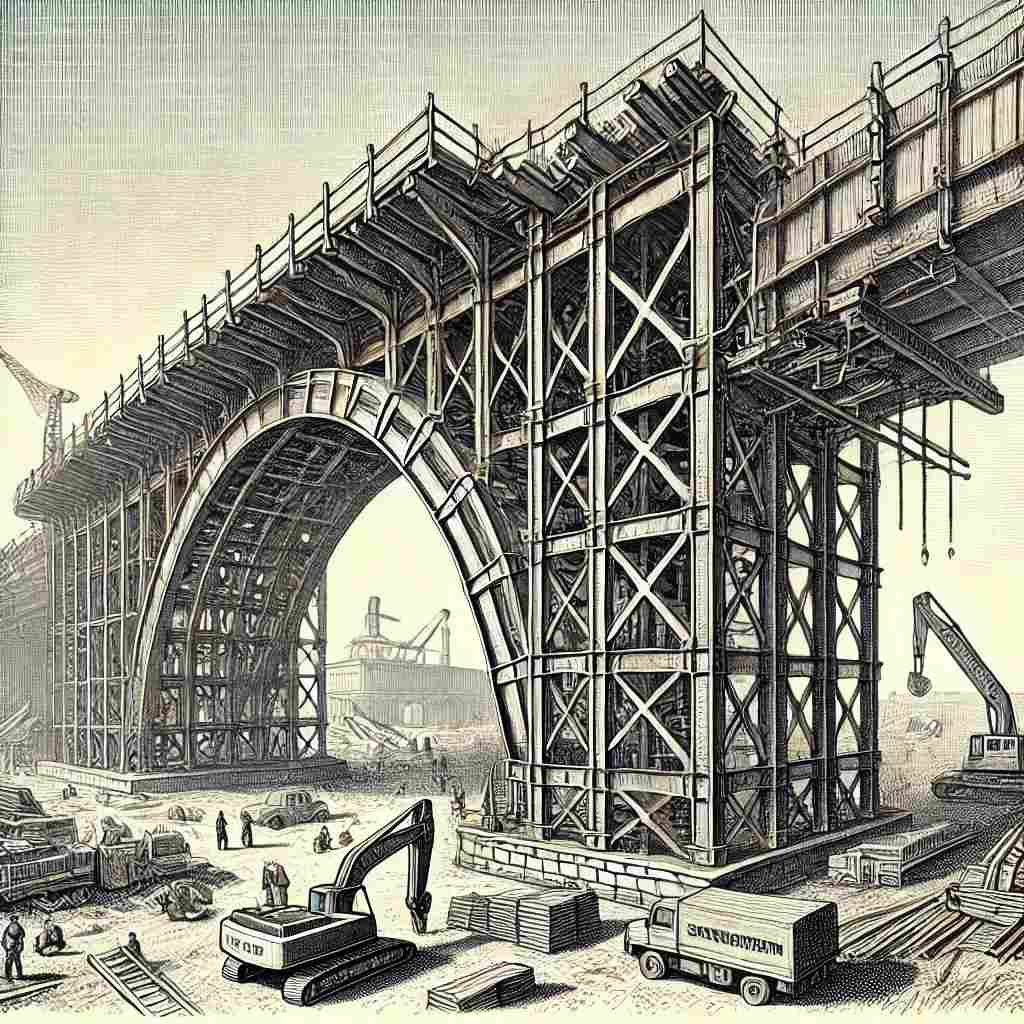
Falsework is a temporary framework used to support structures during construction, particularly when building arches, bridges, or other elements that require support until they are self-supporting. Falsework is essential for ensuring that these structures maintain their shape and integrity as constructed.
Common Uses: Construction of bridges, arches, and complex concrete structures.
Underpinning
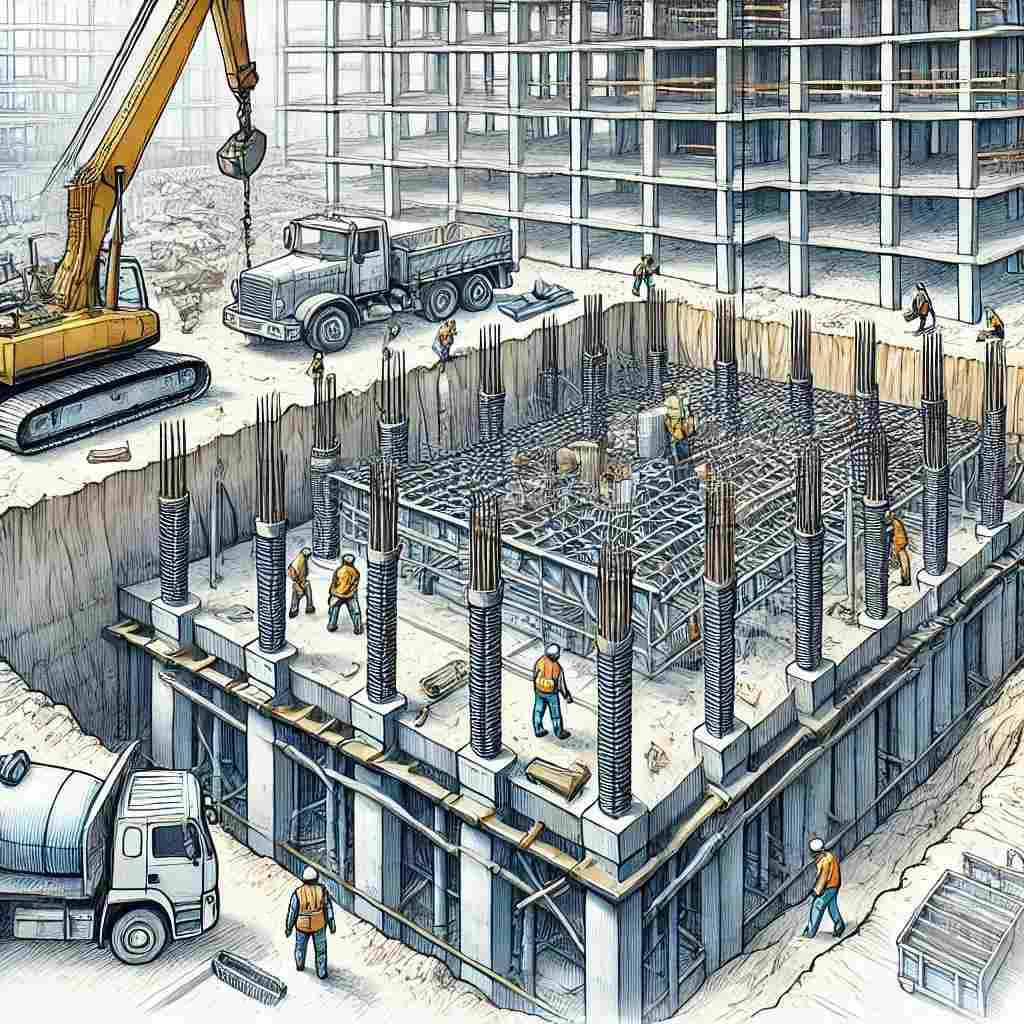
Underpinning is a technique used to strengthen and stabilize the foundation of an existing building or structure. This method is employed when a building’s foundation is no longer strong enough to support it, often due to changes in soil conditions or the need for additional load-bearing capacity. Underpinning involves extending the foundation or adding additional supports.
Common Uses: Strengthening foundations of aging buildings, stabilizing structures after excavation near the foundation, and increasing foundation depth for new construction.
Formwork
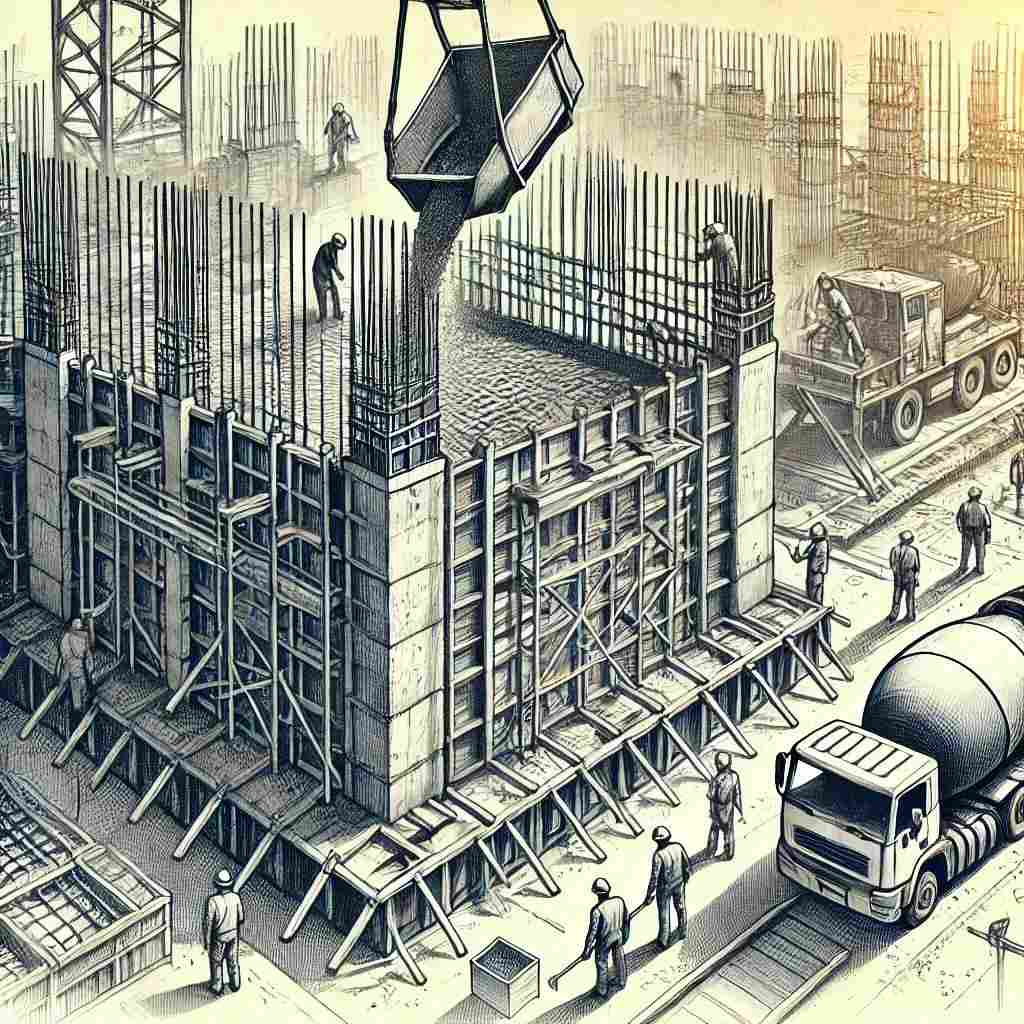
Formwork refers to a temporary mold or frame used to shape and support concrete until it hardens and gains sufficient strength. Formwork is critical in constructing walls, slabs, columns, and other concrete elements. The formwork can be made of wood, metal, or other materials, and it must be strong enough to hold the weight of the concrete while it sets.
Common Uses: Construction of concrete walls, slabs, beams, and columns, and creating complex concrete shapes and designs.
The Takeaway
Cribbing and its related techniques are fundamental to ensuring safety and stability in construction. Whether providing temporary support during excavation, stabilizing structures during repairs, or shaping concrete forms, these methods are indispensable tools for construction professionals. Understanding and applying these techniques correctly not only ensures the safety of workers and the public but also contributes to the successful completion of construction projects.
You can effectively manage the challenges of working with heavy loads, unstable soils, and complex structures by integrating cribbing, shoring, bracing, scaffolding, falsework, underpinning, and formwork into your construction practices. Each technique plays a vital role in creating a safe and stable environment, allowing construction projects to proceed smoothly and successfully.
Related Posts:
- Construction Equipment Types And Construction Equipment List
- How Basement Underpinning Can Improve Your Home’s Plumbing System
- Top 17 Jobs In the Construction Industry [2024 Updated Jobs]
- 5 Signs Your Property Might Need Underpinning


